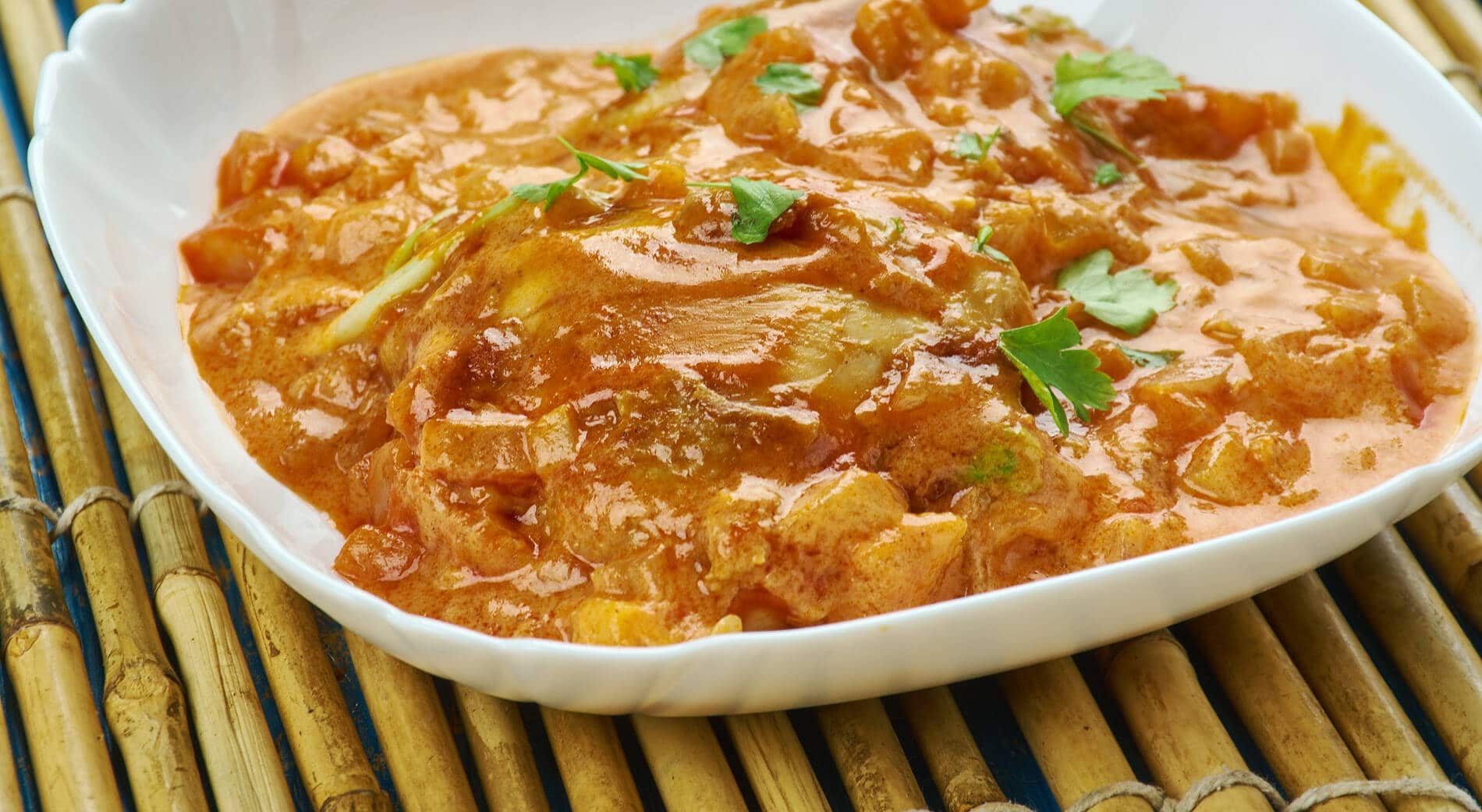20+ Ways On How To Thicken Any Sauce
Important Note: When you buy through our links, we may earn a commission. As an Amazon Associate we earn from qualifying purchases. Content, pricing, offers and availability are subject to change at any time - more info.
If you’ve made a delicious sauce for pasta or some gravy for a chicken, you’re looking for a thick, luscious consistency to pour over and enjoy. What do you do if your sauce turns out runny? You don’t need to throw it out and start again. Here are 20 ways to thicken any sauce.
There are many different ways to thicken a sauce, and the most appropriate will depend on the kind of sauce, whether you want to add different ingredients, and how long you have to cook it. There is a way to thicken every sauce – choose the one that works best for you.
How To Thicken A Sauce By Reduction
The simplest way to thicken a sauce without adding any thickening agent is to simmer until liquid evaporates and the sauce thickens naturally.
Reduction is an ideal thickening method for tomato-based sauces, which don’t always work well with added thickeners because of the tomatoes’ acid.
This method of thickening has the added benefit of intensifying flavor, while other thickeners can dilute or alter the taste of the sauce.
To thicken a sauce by reduction:
- Heat the sauce on medium heat in an open, flat pan – this will speed up the process.
- Once the sauce begins to boil, turn it down to a simmer – you’ll notice the giant bubbles from cooking become smaller and gentler. It would help if you reduced the heat; otherwise, your sauce will boil over.
- After a few minutes, check whether your sauce is thick enough. An easy test is to check whether it coats the back of a spoon. If it slides off, cook longer.
- Once your sauce is the right consistency, serve immediately.
How To Thicken A Sauce With A Roux
Another classic sauce thickening method is to make a roux using equal amounts of flour and butter. Flour contains starch, which thickens as it absorbs liquid and cooks. When you cook the flour, it loses its raw taste and takes on a nutty flavor.
A roux is the basis of many basic sauces, such as white sauce or béchamel, so it works well for milky or cream sauces, as well as gravies. It will make your sauce cloudy, so a roux is not appropriate for a clear sauce.
To make a roux:
- Begin by heating a pan of butter over medium heat.
- When the butter has melted, stir in flour.
- Whisk flour and butter together until they are thick and golden.
- If you’re making a white sauce, add milk and cook until the sauce has thickened.
- Otherwise, you can add your roux to whichever sauce you want to thicken and whisk until combined.
How To Thicken A Sauce With A Beurre Manié
A beurre manié is a sauce-thickening combination of flour and butter, like a roux, but is made slightly differently. The French term means “kneaded butter.”
The advantage of using a beurre manié over a roux is that it makes for a less lumpy and glossier sauce, as the flour is released slowly and evenly.
Follow these steps to make a beurre manié:
- Combine equal amounts of soft butter and flour in a bowl until it has the texture of pliable dough.
- Drop the mixture into your sauce.
- Stir gently over medium heat to ensure that the flour is cooked and the sauce has thickened.
How To Thicken A Sauce With A Flour Slurry
Another traditional way of thickening a sauce is to add a slurry made from flour. Use a flour slurry to thicken any sauce, including a stew or gumbo. It works well for sauces in a slow cooker.
To make a slurry:
- Combine two tablespoons of flour with ¼ cup cold water.
- Whisk until it makes a smooth paste.
- Add the slurry to your sauce.
- Cook the sauce over medium heat, stirring cotinuously until thickened – you need to ensure that the flour will be cooked.
How To Thicken A Sauce With Cornstarch
Using flour to make a roux or slurry is a challenge iff you have a gluten intolerance or allergy. Cornstarch (also known as cornflour) is an excellent gluten-free alternative.
You can make a roux or slurry with cornstarch. It’s easy and practical to use a cornstarch slurry to add thickness to a sauce, as it thickens very quickly and does not discolor the sauce or make it cloudy.
Use cornstarch as a thickener for clear sauces, like stock or soy-based sauces, as well as sweet sauces, like custard. However, you can’t use cornstarch in acidic sauces (like tomato), as the acid breaks down the cornstarch.
To make a cornstarch slurry:
- Combine equal quantitites of cornstarch and cold water, mixing to a smooth paste.
- Add the slurry to your sauce over medium heat and cook, stirring all the while until your sauce is thick enough. Like flour, cornstarch needs to be heated for the thickening to be activated.
How To Thicken A Sauce With Arrowroot
Another gluten-free and wheat-free alternative to flour is arrowroot, which works in the same way as cornstarch. However, while cornstarch comes from corn or maize, arrowroot is a tuber, somewhat like a sweet potato or yam.
Arrowroot thickens at a much lower temperature than cornstarch, so it will thicken your sauce more quickly.
Other advantages of using arrowroot are that it creates a smooth, lump-free sauce. It is also suitable for clear sauces, doesn’t react to acid, is ideal for tomato or lemon-based sauces, and has a neutral flavor. Don’t use arrowroot in dairy-based sauces, though, as it becomes slimy.
Create a slurry with arrowroot in the same way as you would use cornstarch:
- Combine equal parts of water and arrowroot and mix to a paste.
- Stir the slurry into your sauce.
How To Thicken A Sauce With Tapioca
Tapioca starch is another gluten-free alternative to wheat flour – not the tiny tapioca pearls, which will create a pudding-like texture.
Tapioca starch is made from the cassava root and has a slightly sweet flavor, making it suitable for dessert sauces and pie fillings. It won’t discolor your sauce, thickens very quickly, and can be frozen and reheated.
Use twice as much tapioca starch as cornflour when making a slurry or add the tapioca directly to a dish and stir.
How To Thicken A Sauce With Rice Flour
For a nutritious, wheat-free thickener, choose rice flour made from ground rice with more protein and fiber than cornstarch.
Rice flour is used as a thickener in many Asian dishes, and because it has a neutral flavor, it is suitable for any sauce, either sweet or savory.
However, rice flour can create a lumpy sauce, so be sure to mix a smooth slurry before adding it to your sauce and cooking it over medium heat.
How To Thicken A Sauce With Potato Starch
Another in the list of gluten-free sauce thickeners is potato starch, derived from dried potatoes.
Use one part potato starch to two parts water to create a slurry. Add your slurry to the hot sauce, stirring over heat until it thickens.
How To Thicken A Sauce With Water Chestnut Flour
Water chestnut flour, made from dried and powdered water chestnuts, is an excellent gluten-free thickener. You can use it like cornstarch, in similar quantities.
How To Thicken A Sauce With Kudzu
Kudzu is a Japanese vine tuber with many health benefits, so you’ll often find it at health stores and organic markets. This ingrdient is suitable for vegans, vegetarians, and people who want to avoid gluten. Kudzu’s starchy consistency means that the dried, powdered form is a great thickener.
To use powdered kudzu as a thickener for your sauce:
- To thicken two cups of liquid, combine three tablespoons of kudzu powder with three tablespoons of water and stir.
- Combine the paste with your sauce and simmer to thicken.
How To Thicken A Sauce With Gravy Granules
If you’re making a soup, stew, casserole, chili, or brown gravy, instant gravy granules (e.g., Bisto) are very useful as a thickener. These granules usually have a starch component (often wheat flour or cornstarch) that works as a thickener, while other ingredients brown and flavor the gravy.
- Mix a couple of teaspoons of instant gravy granules with boiling water, stirring until combined.
- Add the mixture to your sauce and cook gently until thickened.
How To Thicken A Sauce With Tomato Paste
If you are making a tomato-based sauce, you may not want to add starch to the sauce. Instead, you can use tomato paste or tomato puree to thicken and bind the sauce.
Tomato paste is also suitable for brown sauces and gravies but will have a color and flavor impact in dairy sauces, so it is not recommended.
Add the tomato paste at the beginning of the cooking process for enhanced flavor as the sugar in the tomato caramelizes. If you find that your sauce won’t thicken, you can also stir it in later.
How To Thicken A Sauce With Butter
Butter is an excellent choice for sauces that need a slight thickening and enriching boost, some binding, and added glossiness.
Stir in some cold butter at the end of the cooking period with the pan off the heat – butter-infused sauces split and become greasy if you cook them on high heat.
How To Thicken A Sauce With Egg Yolk
Adding egg yolks to a sauce will also thicken them because of the protein in the egg – this is how custard thickens. Egg yolks are perfect for thickening creamy pasta sauces and rescuing sauces that have split.
However, add the egg yolks carefully to avoid scrambled eggs:
- Separate your eggs, as you will need only the yolks. Two eggs are enough for a pot of sauce.
- Measure out about a cup of the hot sauce you need to thicken.
- Slowly whisk the hot sauce into the egg yolks. This mixing process is called tempering and prevents the egg from splitting the sauce.
- Add the tempered yolks and sauce back into the pot, whisking until stirred in.
How To Thicken A Sauce With Pureed Veg
If you are making a soup or vegetable sauce, an excellent way to thicken the sauce is to add pureed cooked vegetables (e.g., cauliflower, potatoes, sweet potatoes, winter squash, celeriac). The vegetables also add flavor and nutritional value to your dish.
- Roast or boil your vegetables.
- Puree the veggies in the food processor until smooth.
- Stir the vegetables into the sauce – instant thickness!
How To Thicken A Sauce With Potatoes
If you have cold mashed or cooked potatoes, you can puree them as above. But potatoes can also thicken a sauce if you add them raw and let the sauce cook for a while to help the potatoes to release their tasty, thickening starch.
The simplest way to add potatoes to a sauce as a thickener is by grating or chopping them finely and adding them early in the cooking process.
How To Thicken A Sauce With Lentils
Another way of thickening a sauce using vegetables is by adding lentils, which is especially suitable for making a soup or stew.
Add the uncooked lentils at the beginning of the cooking time with other vegetables, and they will thicken your sauce as they cook. Alternatively, add pre-cooked, pureed lentils to the sauce later.
Red lentils work very well as sauce thickeners as they don’t require soaking and cook down relatively quickly.
How To Thicken A Sauce With Beans
Like lentils, beans are ideal for thickening sauces in soups, stews, and chili. The simplest way to add beans is to open a tin of beans, either pureed or as is.
If you want to use dried beans, you need to soak them overnight and then cook them before adding them to your sauce.
How To Thicken A Sauce With Breadcrumbs
A practical and readily available thickener is breadcrumbs – this is an excellent way of using up bread that’s past its prime.
Breadcrumbs are an ideal thickener for tomato sauces or other sauces where you want some bulk but don’t want to change the sauce’s flavor. The starchy crumbs will absorb the liquid and retain the flavor – unless you’re using seasoned breadcrumbs.
- To use breadcrumbs as a thickener, add about a third of a cup of breadcrumbs per cup of sauce.
- Stir the crumbs into the hot sauce.
- Allow the sauce to simmer gently so that the bread can absorb the liquid and thicken it.
How To Thicken A Sauce With Gelatin
Gelatin is a useful sauce thickener, especially for sweet sauces, desserts, and clear sauces. This powdered thickener is carb-free, so a good choice for those who have gluten allergies or are following a keto diet.
However, you need to take care when using gelatin as you can set the sauce, rather than thicken it if you use too much:
- To thicken a sauce or braise, slowly add one teaspoon of gelatin, stirring gently until combined.
- You can also add the gelatin to water and dissolve it before adding it to your sauce.
How To Thicken A Sauce With Xanthum Gum
Xanthum gum is a useful thickener and stabilizer, made via fermentation of soy or corn – think of it like vinegar or yeast. It’s gluten-free, dairy-free, and vegan and contains no carbs.
The advantages of xanthum gum are that it is neutral in taste and mimics the function of gluten, so you can use it in sauces, dressings, gravies, and even baking. It adds creaminess, richness, glossiness, and body. It can also thicken without being heated, and you need to use very little to thicken a large amount of sauce so your flavor doesn’t get diluted.
The danger is that it’s rather like gelatin, in that if you use too much, you can ruin the sauce you’re making. It’s wise to start with a tiny amount of xanthum gum and add more until your sauce reaches the required consistency.
You also need to add it with care, as it needs to be adequately blended into your sauce using an electric blender rather than a hand whisk:
- If you add your xanthum gum to your dry ingredients, combine it with a small amount of oil to prevent lumping.
- Otherwise, add a tiny amount of xanthum gum to your sauce, combining it with an electric blender.
- The sauce should thicken immediately.
How To Thicken A Sauce With Agar Agar
Agar agar is a similar product to gelatin but made from red algae, a plant, rather than the animal sources of gelatin. You can use this Asian ingredient to thicken sweet and savory dishes and even to make vegan jello.
Add a tiny amount of agar to your sauce at a time – just like gelatin and xanthum gum, a little goes a long way.
How To Thicken A Sauce With Guar Gum
Guar gum is another natural thickener often used in commercial products. This thickener is made from the seed of the guar plant, is vegan, and is carb-free.
Like agar agar and xanthum gum, guar gum is an extremely powerful thickener, eight times stronger than cornstarch. For this reason, you should add it to your sauces in minimal amounts until you get the required consistency.
Guar gum is handy in that it is flavorless and functions well in warm or cold dishes. Use it for sweet sauces and salad dressings, where you want thickness without flavor or bulk.
The main ways to thicken a sauce are to reduce it by cooking or to add a thickening agent, like starch or gelling agent. You can also add more thickening ingredients to your sauce, like tomato paste, vegetables, eggs, or butter.
























